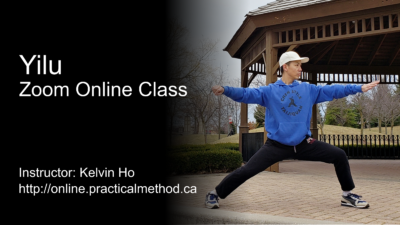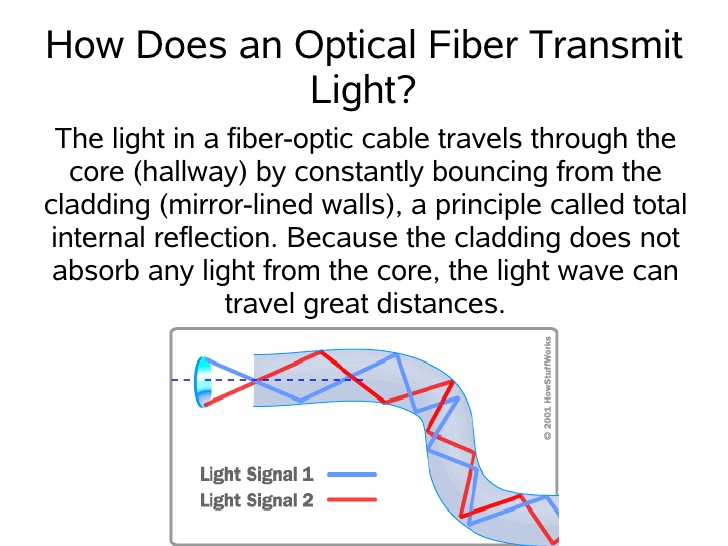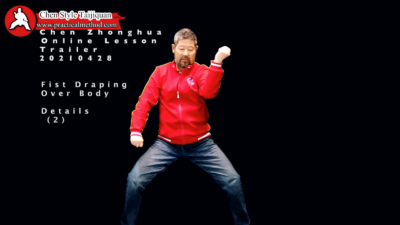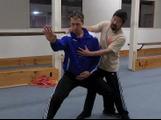Level 3 Chinese Instructor Class
- Exercise for conversion from rotation to linear movement (based on Six Sealing Four Closing movement)
- Think of 2 balls enclosed tightly within a container. When we rotate, rotate only one of the 2 balls, and not both. If we only have one ball, the rotation we attempt tends to toss the ball.
- When doing the exercise, the front kua needs to rotate, but the typical mistake is that both kuas are tied together, when the front kua moves, the rear kua is moved as well.
- When doing the exercise, the waist turns to the left carrying the elbow but the forearm and hand stay on the curve track going forward while the front kua will stretch and rotate on the opposite curve at the bottom.









